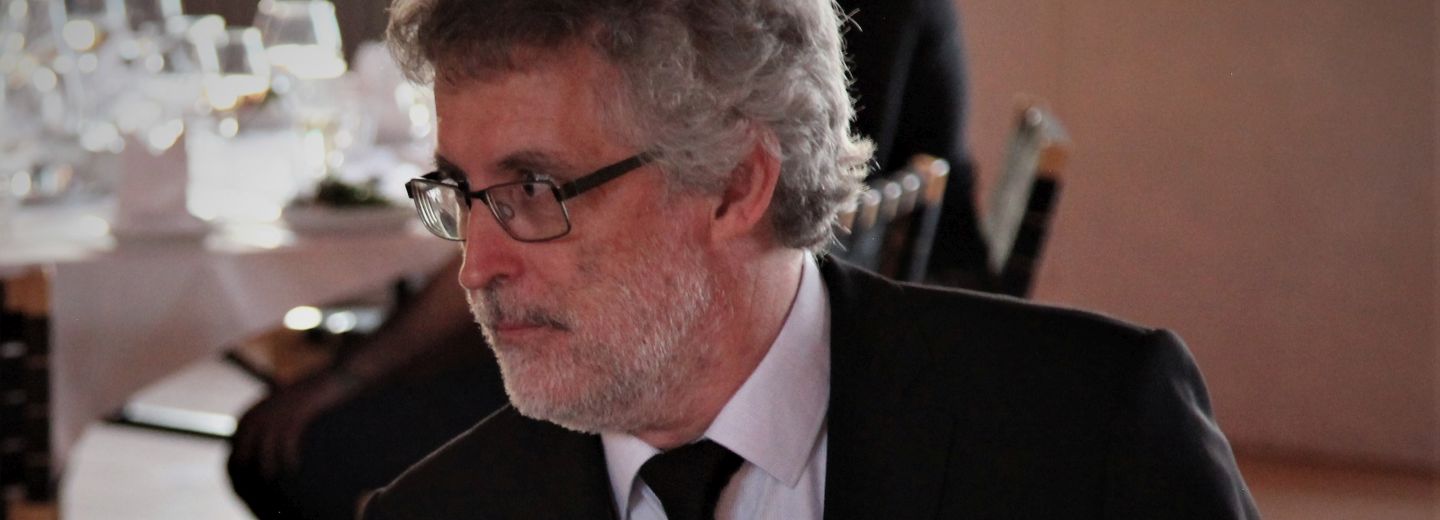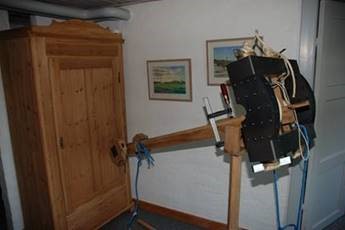
From apprentice to associate professor - Kasper Paasch
59-year-old Kasper Paasch teaches High Frequency Communication and is semester supervisor in 3rd-semester mechatronics at the Centre for Industrial Electronics. He is also a researcher in power electronics and solar cell systems. His passion for electronics, archery, history, and archaeology has not only created an unusual career path but also fills all hours of the day. His passions have materialised into a catapult, which is positioned at his home address. But this we will return to.
Kasper Paasch has always been interested in electronics. As a 17-year-old, he tried to get an apprenticeship as a radio mechanic, but there was no apprenticeship to be found. Instead, he took the Air Force entrance test, slipped through the eye of the needle, and was trained as a Electro technician. As a Electro Technician, he first worked for half a year on Bornholm, then for four years at Flyvestation Skrydstrup.
- While I worked at Flyvestation Skrydstrup, I wanted to continue my studies, but since I had no high school education, I had to study my A-Levels as single subjects at evening school for four years. After that, I started my bachelor in 1986 in Aalborg. I graduated in 1991, specialising in electronics and optics.
While Kasper Paasch was writing his master's project, a job posting from Danfoss caught his eye.
- It sounded incredibly exciting, so I applied for it even though I was not fully educated. You can always try, I thought.
Once again, Kasper Paasch slipped through the cracks. He got the job. For several years, he worked with, among other things, optical sensors, and other new technologies in the development department.
He was involved in projects from which companies such as Danfoss Bionics and Danfoss Analytical later emerged. In December 2009, however, Kasper Paasch replaced the workplace with a new one at SDU. After a few years, the then dean of the Faculty of Engineering, Per Michael Johansen, encouraged him to take a PhD.
- Then I had to start as a 50-year-old.
And now we can talk about Kasper Paasch's catapult. It is time to talk about his hobbies. But first, we must add that in 2000 he signed up for the TV show 'The Great Mission', where 5,000 Danes fought to become the first Dane in space, and in the long run secure a trip to Mars.
However, Kasper Paasch did not slip through the eye of the needle. He left the competition in the second round. And maybe it turned out to be a good thing. Because if Kasper Paasch needs a trip into space, then he should go to Venus, where a day corresponds to 243 days on Earth.
In parallel with his career, Kasper Paasch has not only taken a bachelor's degree in religious studies, where he wrote about the Roman Cult of Mithras in his master's thesis. He also practices Jiu-jitsu. And for 16-years-old he had an available contract in the Air Force. At home, he also enjoys repairing a motorcycle from 1929. Also, he has built a catapult.
- I have started a private PhD. in archaeology, where I combine my three main interests, namely archaeology, archery, and engineering. So, I designed a catapult! However, at one point I found out that I was pretty much on edge with the gun law, so I put the project on pause when I had to do my PhD. at SDU. But now the catapult is pretty much finished. And it must be said that I HAVE received a permit from the Ministry of Justice to build it. I'm waiting for the shooting permit - I have not received it yet. Those who are to help must also be cleared by the police.
The catapult can shoot over 300 meters with 70 cm long spears. It was the ancient Greeks who in the year 220 BC designed this type of catapult.

- For me, it's about the technical study - how well was it designed at the time? I have made two publications that have been presented at conferences. And three to four publications in total. I have several ideas, so now I have to get started again.
These are not the kind of stone-throwing catapults that fans of Asterix and Obelix are familiar with.
- No, that kind is more primitive. Mine has two rope systems on the side and a bow arm in the middle. However, it is not in the bow arm where the energy storage is. It is in the torsion springs, where you can store an incredible amount of energy. In ancient times, tendons from oxen were used. It had almost the same energy storage as steel springs. But the best thing is actually hair. So, I have been looking at the structure of hair. There's SO much technology in this, there really is.
- While I worked at Flyvestation Skrydstrup, I wanted to continue my studies, but since I had no high school education, I had to study my A-Levels as single subjects at evening school for four years. After that, I started my bachelor in 1986 in Aalborg. I graduated in 1991, specialising in electronics and optics.
While Kasper Paasch was writing his master's project, a job posting from Danfoss caught his eye.
- It sounded incredibly exciting, so I applied for it even though I was not fully educated. You can always try, I thought.
Once again, Kasper Paasch slipped through the cracks. He got the job. For several years, he worked with, among other things, optical sensors, and other new technologies in the development department.
He was involved in projects from which companies such as Danfoss Bionics and Danfoss Analytical later emerged. In December 2009, however, Kasper Paasch replaced the workplace with a new one at SDU. After a few years, the then dean of the Faculty of Engineering, Per Michael Johansen, encouraged him to take a PhD.
- Then I had to start as a 50-year-old.
And now we can talk about Kasper Paasch's catapult. It is time to talk about his hobbies. But first, we must add that in 2000 he signed up for the TV show 'The Great Mission', where 5,000 Danes fought to become the first Dane in space, and in the long run secure a trip to Mars.
However, Kasper Paasch did not slip through the eye of the needle. He left the competition in the second round. And maybe it turned out to be a good thing. Because if Kasper Paasch needs a trip into space, then he should go to Venus, where a day corresponds to 243 days on Earth.
In parallel with his career, Kasper Paasch has not only taken a bachelor's degree in religious studies, where he wrote about the Roman Cult of Mithras in his master's thesis. He also practices Jiu-jitsu. And for 16-years-old he had an available contract in the Air Force. At home, he also enjoys repairing a motorcycle from 1929. Also, he has built a catapult.
- I have started a private PhD. in archaeology, where I combine my three main interests, namely archaeology, archery, and engineering. So, I designed a catapult! However, at one point I found out that I was pretty much on edge with the gun law, so I put the project on pause when I had to do my PhD. at SDU. But now the catapult is pretty much finished. And it must be said that I HAVE received a permit from the Ministry of Justice to build it. I'm waiting for the shooting permit - I have not received it yet. Those who are to help must also be cleared by the police.
The catapult can shoot over 300 meters with 70 cm long spears. It was the ancient Greeks who in the year 220 BC designed this type of catapult.

- For me, it's about the technical study - how well was it designed at the time? I have made two publications that have been presented at conferences. And three to four publications in total. I have several ideas, so now I have to get started again.
These are not the kind of stone-throwing catapults that fans of Asterix and Obelix are familiar with.
- No, that kind is more primitive. Mine has two rope systems on the side and a bow arm in the middle. However, it is not in the bow arm where the energy storage is. It is in the torsion springs, where you can store an incredible amount of energy. In ancient times, tendons from oxen were used. It had almost the same energy storage as steel springs. But the best thing is actually hair. So, I have been looking at the structure of hair. There's SO much technology in this, there really is.